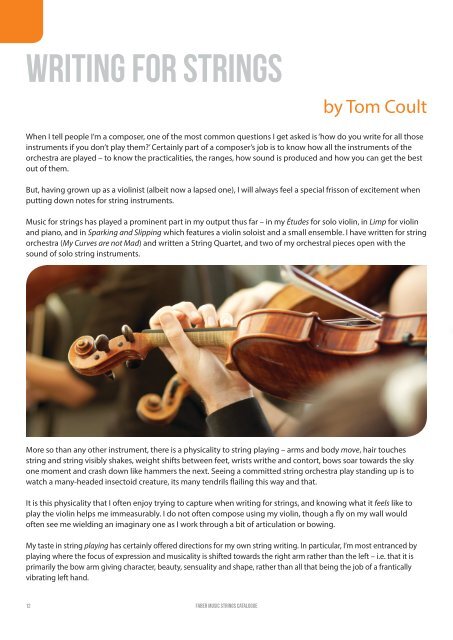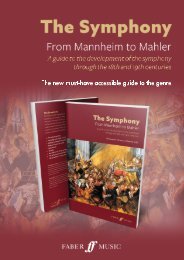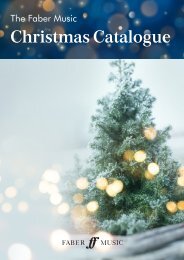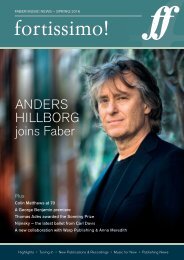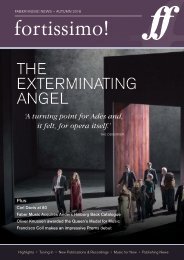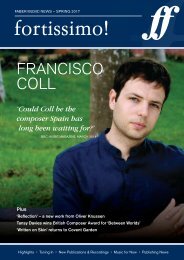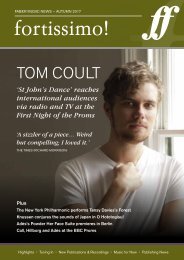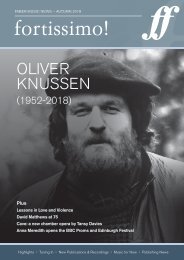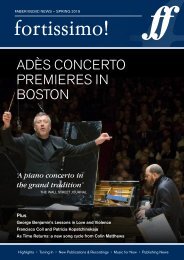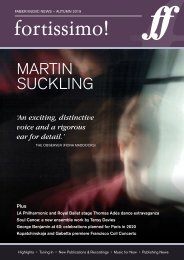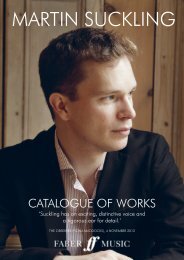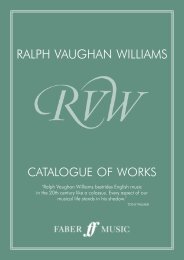Strings Catalogue
Tuition and repertoire books for string instruments are a big part of our publishing catalogue. We hope that this resource will help you find out more about the titles that you already know, and highlight those hidden gems you may not have come across before.
Tuition and repertoire books for string instruments are a big part of our publishing catalogue. We hope that this resource will help you find out more about the titles that you already know, and highlight those hidden gems you may not have come across before.
Create successful ePaper yourself
Turn your PDF publications into a flip-book with our unique Google optimized e-Paper software.
Writing for <strong>Strings</strong><br />
by Tom Coult<br />
When I tell people I’m a composer, one of the most common questions I get asked is ‘how do you write for all those<br />
instruments if you don’t play them?’ Certainly part of a composer’s job is to know how all the instruments of the<br />
orchestra are played – to know the practicalities, the ranges, how sound is produced and how you can get the best<br />
out of them.<br />
But, having grown up as a violinist (albeit now a lapsed one), I will always feel a special frisson of excitement when<br />
putting down notes for string instruments.<br />
Music for strings has played a prominent part in my output thus far – in my Études for solo violin, in Limp for violin<br />
and piano, and in Sparking and Slipping which features a violin soloist and a small ensemble. I have written for string<br />
orchestra (My Curves are not Mad) and written a String Quartet, and two of my orchestral pieces open with the<br />
sound of solo string instruments.<br />
More so than any other instrument, there is a physicality to string playing – arms and body move, hair touches<br />
string and string visibly shakes, weight shifts between feet, wrists writhe and contort, bows soar towards the sky<br />
one moment and crash down like hammers the next. Seeing a committed string orchestra play standing up is to<br />
watch a many-headed insectoid creature, its many tendrils flailing this way and that.<br />
It is this physicality that I often enjoy trying to capture when writing for strings, and knowing what it feels like to<br />
play the violin helps me immeasurably. I do not often compose using my violin, though a fly on my wall would<br />
often see me wielding an imaginary one as I work through a bit of articulation or bowing.<br />
My taste in string playing has certainly offered directions for my own string writing. In particular, I’m most entranced by<br />
playing where the focus of expression and musicality is shifted towards the right arm rather than the left – i.e. that it is<br />
primarily the bow arm giving character, beauty, sensuality and shape, rather than all that being the job of a frantically<br />
vibrating left hand.<br />
12<br />
Faber Music strings <strong>Catalogue</strong>


